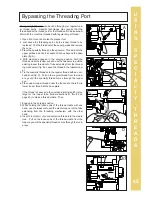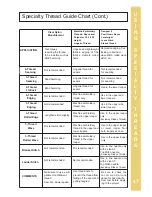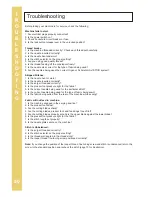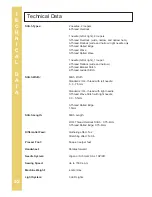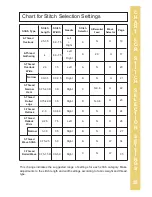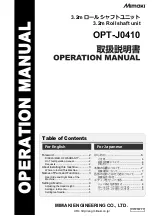
Threading Medium Weight Thread
Medium weight threads,
including topstitching thread, Decor rayon and stretch nylon thread, are too bulky
to form a knot that would fit through the threading port, but they can slip through the hole with the aid of a
thread "cradle" made from regular serger thread (page 43).
U
S
I
N
G
S
P
E
C
I
A
L
T
Y
T
H
R
E
A
D
S
42
Using Specialty Threads
Threading Lightweight Thread
Changing Threads
B
C
A
Beautiful stitches can be formed by serging with specialty threads, cords and ribbons. These heavier or
shinier threads can be used to enhance appearance, add strength or elasticity, or create special effects,
depending on the thread you choose.
Some specialty threads work well through the needle and loopers. There are some that are too heavy for
the needle and should only be used in the loopers.
Use the Specialty Thread chart on pages 46/47 as a guide keeping in mind that the threads can vary from
one manufacturer to another. It is best to sew test for best results.
Note:
Thicker threads require longer stitch length.
Specialty thread used in the needle can be threaded in the usual way. The ease with which they can be
threaded in the loopers, however, depends on thread thickness.
1. Clip the existing thread at the cone and remove the cone
from the spindle (fig.A).
2. Place the new cone on the spindle. With the two threads
together, tie an overhand knot or square knot (fig.B).
3. Raise the presser foot, and pull the old thread from under the
foot until the new thread comes through the machine.
Note:
When changing a needle thread, pull the thread through
until it reaches the needle eye. Then clip off the knot (fig.C) and
rethread the needle eye manually or with the needle threader.
Содержание Enlighten BLE3ATW-2
Страница 1: ......
Страница 56: ...EI 31 2 E BLE3ATW 2TA...


















